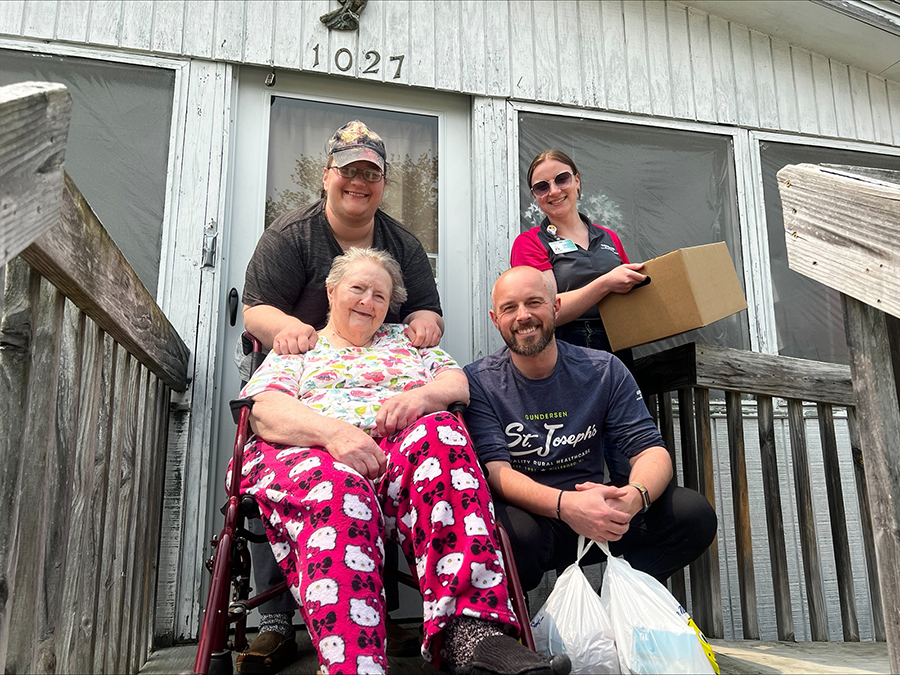 Brooke Mikla, Community Wellness Coordinator and Dan Howard, Community Relations Manager at Gundersen St. Joseph's make monthly food deliveries to HungerCare participants.
Brooke Mikla, Community Wellness Coordinator and Dan Howard, Community Relations Manager at Gundersen St. Joseph's make monthly food deliveries to HungerCare participants.Hillsboro, Elroy, and Wonewoc are the three contiguous communities served by Gundersen St. Joseph’s Hospital and Clinics (St. Joe’s). The communities are sparsely populated with an average of 60% of the population living outside of the city limits on farms.
48% of these households are below the ALICE (Asset Limited, Income Constrained, but Employed) threshold. 45‐55% of the school students are enrolled in the free and reduced lunch program, and in Hillsboro, 2 in 5 children under 18 are below the federal poverty level.
Because of the poverty level in our community, many struggle to access healthy food and nutrition education, which has impeded their health improvement.
However, our assets include two highly active and engaged food pantries with existing supply chain support from Second Harvest Foodbank of Southwest Wisconsin and a hospital that is dedicated to addressing socioeconomic factors.
Despite having two great food pantries, people still struggle to access the resources. This is due to a number of factors including transportation and stigma.
We had heard about a program that Second Harvest was trying to roll out called “HungerCare.” The program provides a monthly box of healthy food and recipes, all designed by a registered dietitian, like programs such as “Blue Apron” or “Hello, Fresh.” Our local food pantries were already being supplied by Second Harvest for regular food pantry items, so we were able to use their supply chain to deliver the HungerCare boxes to the pantries for pick up by the participants.
Initially, it was intended that the participants would collect their food boxes at the food pantries on the 3rd Thursday of the month. However, at our first distribution date in March, we saw first‐hand the limitations that many people face in our communities.
One participant was an elderly lady around 90 years old who was wheelchair‐bound and being cared for by a younger relative. They lived together and had no vehicle. During the first distribution day, this lady had to be wheeled three blocks in the pouring rain by her caregiver to the food pantry as she was not able to be left alone. They came to collect their box of food and do their weekly shopping at the food pantry. When they had finished shopping, they headed back out in the pouring rain with bags of food piled high on the lap of the lady in the wheelchair and several hanging from the handles. This was a common occurrence for them. It was at this moment that we decided that we simply had to figure out a way to deliver these boxes of food.
By the time of our second monthly distribution, we had developed a delivery route that reached 35 participants and covered around 75 square miles of rural back roads. We are now in our fourth month of the program and continuing to make home deliveries. We are currently looking at expanding the capacity to serve more patients and feel we can comfortably serve 100 patients per month through a combination of pantry pick‐up and home delivery.